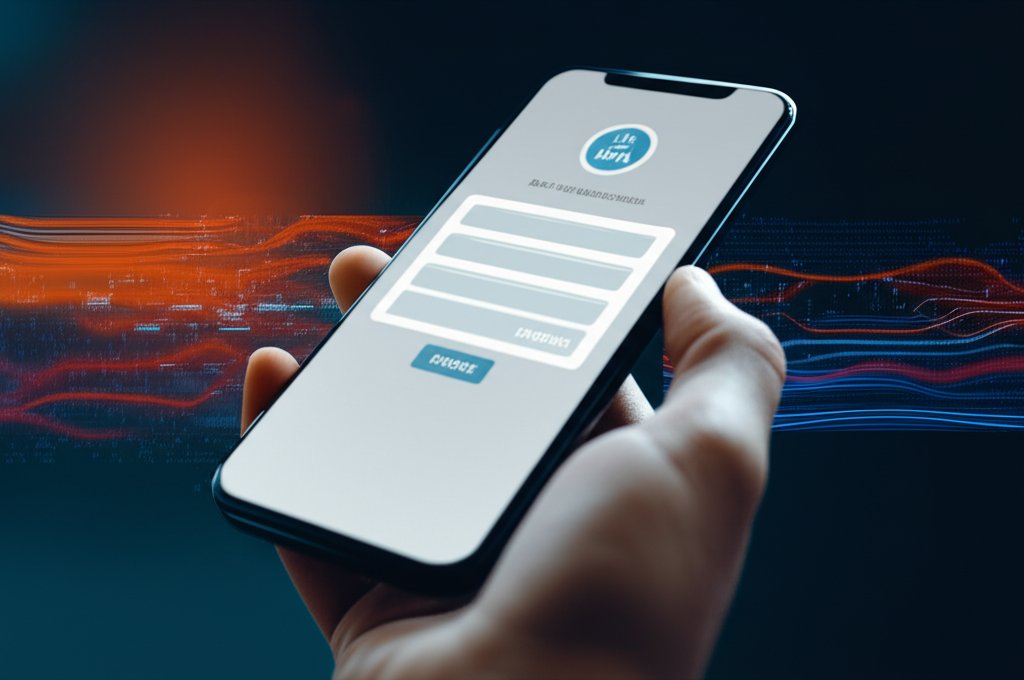Why Your Small Business Needs MFA: A Practical Roadmap to Multi-Factor Authentication
In today’s interconnected world, safeguarding your business from digital threats is no longer optional; it’s a fundamental requirement. You likely see the frequent headlines about data breaches, stolen identities, and compromised accounts. As a small business owner, it’s easy to assume you’re too insignificant to be a target. However, this is a dangerous misconception. Cybercriminals often specifically target small businesses, recognizing they may have fewer resources and less robust security measures in place.
This guide is designed to cut through the technical jargon and equip you with a powerful, yet accessible, tool to significantly enhance your company’s security posture: Multi-Factor Authentication (MFA). We’ll break down MFA into plain English, explain precisely why it’s indispensable for your business, and provide a clear, practical roadmap to get you started, empowering you to take control of your digital security.
The Password Problem: Why “Something You Know” Isn’t Enough Anymore
The reality of passwords today
For decades, passwords have been our primary digital defense. The idea was simple: “something you know”—a secret phrase or combination of characters—would keep your online assets secure. But let’s be honest, how effective is that approach truly today? We all know the common pitfalls:
- Easily guessed: Many individuals still opt for simple, predictable passwords that are trivial for attackers to crack.
- Reused everywhere: It’s a pervasive habit to use the same password across multiple services. If just one of these services suffers a breach, all your accounts using that password become vulnerable.
- Vulnerable to breaches: Billions of passwords have been exposed in widespread data breaches. If your password was among them, it’s already circulating on the dark web.
- Phishing attacks: Sophisticated cybercriminals routinely trick employees into revealing their passwords through convincing fake websites or emails.
- Brute-force attacks: Automated programs relentlessly guess passwords until they hit the right combination.
Relying solely on a password is akin to securing your business’s front door with a single, often flimsy, lock. Is that truly sufficient protection for everything you’ve painstakingly built?
The tangible cost of a compromised password
The repercussions of a single compromised password can be catastrophic for a small business:
- Data breaches: Sensitive customer data, proprietary information, and critical financial records could be stolen, leading to regulatory fines and legal liabilities.
- Financial loss: Direct theft from bank accounts, fraudulent transactions, or demands for ransom in ransomware attacks.
- Reputational damage: Customers lose trust, and your brand’s standing takes a severe hit. Rebuilding a damaged reputation is an arduous and costly endeavor.
- Business disruption: Loss of access to critical operational systems, extended periods of downtime, and significant operational headaches that impact productivity and revenue.
While we don’t aim to be alarmist, it’s imperative to grasp these risks. The reassuring news is that a straightforward, highly effective solution exists, offering substantial layers of protection without requiring you to become a cybersecurity expert overnight.
What You’ll Learn
By the conclusion of this guide, you will not only understand what MFA is but will feel confident and empowered to implement it effectively for your business. Here’s what we’ll cover:
- You’ll discover why traditional passwords alone are no longer adequate to protect your business, and why solutions like passwordless authentication are gaining traction.
- You’ll grasp what Multi-Factor Authentication (MFA) truly is and how it creates powerful, layered defenses.
- We’ll explore the various types of MFA and help you identify the best options for your small business scenarios.
- You’ll receive a clear, practical roadmap for implementing MFA, even if you don’t have a dedicated IT team.
- We’ll address common concerns and demonstrate how straightforward it has become to significantly boost your business’s digital security.
Prerequisites
The good news is you most likely already meet the basic prerequisites for implementing MFA:
- Online Accounts: You have existing online accounts that require protection (e.g., email, online banking, cloud storage, CRM, business social media).
- A Device: A smartphone, tablet, or computer capable of running an authenticator app or receiving text messages.
- A Willingness to Enhance Security: The critical desire to protect your business’s valuable digital assets and employee information.
Step-by-Step Instructions: Implementing MFA in Your Small Business
Step 1: Understand the Basics of MFA – Your Digital Door with More Locks
What is Multi-Factor Authentication (MFA)?
Simply put, Multi-Factor Authentication (MFA) is a security method that requires you to present two or more distinct types of evidence to verify your identity before gaining access to an account or system. Imagine your password as the key to your front door. MFA is like having that key, plus a security code, plus a fingerprint scanner. Even if someone manages to steal your key, they still cannot get in.
You may also encounter the term Two-Factor Authentication (2FA). What’s the difference? 2FA is a specific type of MFA that uses exactly two factors. MFA is the broader category, encompassing solutions that might use two, three, or even more factors. For most small businesses, 2FA is an excellent starting point and provides a monumental leap in security.
The core principle behind MFA is to combine different categories of authentication to create a much more robust defense. There are three primary categories of authentication factors:
- Something you know: This is your traditional password, PIN, or security question—information you’ve memorized.
- Something you have: This refers to a physical item that only you possess. Examples include your mobile phone (for authenticator apps or SMS codes), a hardware security key, or an access card.
- Something you are: This category encompasses biometrics—unique biological attributes. Think fingerprint scans, facial recognition, or iris scans.
How MFA Works in Practice: A Step-by-Step Scenario
Let’s walk through a typical MFA login process:
- You initiate login: You navigate to your email or cloud storage service and input your username and password (something you know).
- The system requests a second factor: Instead of immediately granting access, the system prompts you for an additional piece of verification. This might involve:
- A code generated by an authenticator app on your phone.
- A push notification sent to your phone, asking you to tap “Approve” or “Deny.”
- A fingerprint scan on your device or a facial recognition prompt.
- Verification and access: You provide the second factor (something you have or something you are). If both your password and the second factor are correct, access is granted. If either is incorrect, access is denied.
It’s a straightforward process that makes unauthorized access exponentially more difficult, even if a cybercriminal manages to obtain one of your passwords.
Step 2: Identify Your Critical Business Accounts
Before you endeavor to enable MFA everywhere (which is a commendable long-term goal!), begin by identifying the most critical systems and data for your business. Ask yourself: where would a breach inflict the most significant damage? Prioritize these accounts:
- Email accounts: Often considered the “keys to your kingdom,” as they are frequently used for password resets on other services. Be sure to avoid common email security mistakes.
- Financial software: Accounting platforms, online banking portals, and payment processors.
- Cloud storage: Services like Google Drive, OneDrive, or Dropbox, which likely house sensitive documents and proprietary information.
- Customer Relationship Management (CRM) systems: Containing valuable customer data and sales information.
- Administrator accounts: Any accounts with elevated privileges for critical business software, websites, or networks.
Start by securing these high-priority accounts, then systematically expand to other services over time.
Step 3: Choose the Right MFA Solution for Your Small Business
Several practical MFA options are available, and selecting the best fit requires considering your team’s technical comfort level and specific business needs.
-
Authenticator Apps (Highly Recommended for Balance of Security & Ease):
- How they work: These apps, installed on a smartphone, generate time-sensitive, one-time codes (TOTP – Time-based One-Time Password) that refresh every 30-60 seconds. Many also support push notifications, where you simply tap “Approve” on your phone to complete a login.
- Examples: Google Authenticator, Microsoft Authenticator, Duo Mobile, Authy.
- Advantages for SMBs: Most are free, offer robust security, function even without cell service (for time-based codes), and are generally more secure than SMS codes. They strike an excellent balance between security and user convenience.
- Use Cases: Ideal for nearly all business accounts, including email, cloud storage, CRM, and social media.
-
SMS/Text Message Codes (Use with Extreme Caution):
- How it works: A numeric code is sent to your registered mobile phone number via text message. You enter this code to complete your login.
- Advantages for SMBs: It’s simple and familiar for most users, requiring no new app installation.
- Disadvantages: This method is the least secure among common MFA types. SMS messages can be intercepted, and phone numbers are highly vulnerable to “SIM-swapping” attacks, where criminals trick carriers into transferring your number to their device. While better than no MFA, we strongly discourage using SMS for critical business accounts.
- Use Cases: Only consider for non-critical, low-risk accounts where other MFA options are unavailable.
-
Biometrics (Increasingly Common and Convenient):
- How it works: Utilizes your unique biological traits, such as a fingerprint scan (e.g., Touch ID, Windows Hello) or facial recognition (e.g., Face ID), to verify identity.
- Advantages for SMBs: Extremely convenient, very personal to the user, and often integrated seamlessly into modern smartphones and laptops.
- Use Cases: Excellent as a second factor for accessing devices, and increasingly offered by services as an MFA option when logging in via a compatible device.
-
Hardware Security Keys (Highest Security for Targeted Threats):
- How it works: These are small physical devices (resembling a USB drive) that you plug into your computer or tap against your phone. They generate the second factor cryptographically, making them exceptionally resistant to phishing attacks.
- Examples: YubiKey, Google Titan Security Key.
- Advantages for SMBs: Considered the gold standard for phishing resistance, offering the strongest protection against sophisticated attacks.
- Considerations: There’s an upfront cost per key, and deployment might be slightly more complex.
- Use Cases: Best reserved for highly sensitive accounts, such as administrative access to your core infrastructure, financial systems, or accounts held by key executives.
Pro Tip for Small Businesses: For the vast majority of your business accounts, starting with free authenticator apps like Google Authenticator or Microsoft Authenticator is an excellent, secure, and cost-effective choice. They offer a robust balance of security and user-friendliness.
Step 4: Practical Roadmap: Enabling MFA on Common Business Platforms
Now that you understand the types, let’s look at how to enable MFA on platforms your business likely uses:
-
Google Workspace (Gmail, Drive, Docs):
- Log in to your Google Account.
- Go to “Security” in the left navigation panel.
- Under “How you sign in to Google,” click “2-Step Verification.”
- Follow the prompts to set it up, choosing an authenticator app (recommended) or SMS as your primary method. Ensure you generate and save backup codes!
-
Microsoft 365 (Outlook, OneDrive, Teams):
- Log in to your Microsoft Account (or your business’s Microsoft 365 portal if managed).
- Go to “Security info” or “Update info” under your profile.
- Choose “Add method” and select “Authenticator app” (recommended) or “Phone” (for SMS/call verification).
- Follow the on-screen instructions to link your authenticator app or phone number.
-
Social Media for Business (Facebook, Instagram, LinkedIn, X):
- Access your account’s “Settings & Privacy.”
- Navigate to “Security and Login” or “Security and privacy.”
- Look for “Two-Factor Authentication” or “2FA” and enable it.
- Again, an authenticator app is generally the most secure choice over SMS.
-
Cloud Storage (Dropbox, Box):
- Access your account settings or profile.
- Find the “Security” section.
- Look for “Two-step verification” or “2FA” and enable it, preferring an authenticator app.
-
Online Banking & Payment Processors:
- Log in to your business banking portal or payment service (e.g., PayPal, Stripe).
- Go to “Security Settings” or “Profile.”
- Enable “Two-Factor Authentication” or “MFA.” Banks often default to SMS, but check if an authenticator app option is available.
Remember, the exact steps may vary slightly by platform, but the general path to security settings and enabling MFA remains consistent.
Step 5: Rollout and Employee Training
Implementing MFA is as much about people as it is about technology. Here’s how to ensure a smooth adoption:
- Start with administrators and high-risk users: Begin by securing the accounts of your team leaders and anyone with access to highly sensitive data. They can then serve as internal champions.
- Provide clear, non-technical instructions and support: Don’t simply send an email with a link. Offer a straightforward, step-by-step guide (much like this one!), consider a brief demonstration, and be readily available to answer questions and troubleshoot.
- Explain why it’s important: Help your employees understand the personal and business benefits. Emphasize that MFA protects them and their individual data too, not just the company. Frame it as empowering them to enhance their own digital security.
Step 6: Establish Clear Policies
To ensure consistency and effectiveness, make MFA mandatory for all employees on critical business systems. Document your policy clearly and ensure every team member understands their role in upholding it. This isn’t about being authoritarian; it’s about protecting everyone’s interests.
Step 7: Regular Review and Updates
Cybersecurity is an ongoing journey, not a one-time configuration. Periodically:
- Review which systems require MFA and ensure new services are onboarded with MFA enabled.
- Encourage employees to use stronger MFA methods (e.g., migrating from SMS to authenticator apps).
- Stay informed about emerging security threats and update your settings or solutions as needed.
Key Benefits: Why MFA is a Must-Have for Your Business
We’ve discussed how it works, but let’s reinforce why MFA is truly a transformative security measure for your business:
Drastically reduces cyber risk
This is the paramount benefit. MFA makes unauthorized access exponentially more difficult. Even if a hacker obtains your password, they cannot log in without that second factor, which they do not possess. It effectively closes the gaping security hole left by passwords alone.
Protection against common, devastating threats
MFA is your strongest defense against:
- Phishing: Even if an employee falls victim to a phishing scam and reveals their password, MFA prevents the attacker from gaining access.
- Social engineering: Attackers cannot leverage stolen personal information to bypass MFA.
- Credential theft: Stolen usernames and passwords become largely useless without the required second factor.
- Account takeovers: It significantly reduces the chances of malicious actors gaining control of your business accounts.
Enhances data security and compliance
MFA safeguards sensitive customer information, financial data, and your invaluable intellectual property. It provides an essential layer of defense for everything your business relies on digitally. Furthermore, many industry regulations and standards now explicitly require or strongly recommend MFA, including HIPAA (healthcare), GDPR (data privacy), and PCI DSS (credit card handling). Implementing MFA helps you meet these compliance obligations and avoid costly fines.
Peace of mind for business owners
Knowing that your digital assets are significantly better protected allows you to concentrate on what you do best: growing and running your business. It’s a proactive investment in your company’s stability and your personal confidence.
Supports remote and hybrid workforces
As more businesses embrace remote or hybrid work models, employees access systems from various locations and devices. MFA is crucial for ensuring that access remains secure, regardless of where your team members are working from, reducing the expanded attack surface of distributed teams.
Common Objections & Practical Solutions
It’s natural to have concerns when implementing new security measures. Let’s proactively address common objections small businesses encounter with MFA adoption and offer practical solutions:
-
Objection: “MFA is too complicated and will slow down our workflow.”
- Solution: While some older MFA methods could be cumbersome, modern MFA is remarkably quick and seamless. Push notifications require just a simple tap on your phone, and biometrics are often instantaneous. The few extra seconds it might take for a robust security check are a minuscule trade-off for the massive security boost it provides, far outweighing the disruption of a breach. Effective training and demonstrating the ease of use are key here.
-
Objection: “The cost of implementing MFA is prohibitive for a small business.”
- Solution: This is a common misconception. As we’ve emphasized, excellent and highly secure free options like Google Authenticator and Microsoft Authenticator are widely available. The initial (often zero) cost of implementing MFA is dwarfed by the potential financial, reputational, and operational costs of a single data breach. Consider it a preventative investment, not an expense.
-
Objection: “My employees will resist it or find it annoying.”
- Solution: Employee buy-in is crucial. The key is clear, empathetic communication and comprehensive training. Explain why MFA is necessary, how it protects them personally (their professional accounts, their personal data linked to work), and demonstrate how easy it is to use. Frame it as empowering them to be part of the solution. Patience, proactive support, and emphasizing collective security go a long way in overcoming initial resistance.
-
Objection: “What if an employee loses their device or authenticator?”
- Solution: This is a valid concern, and planning for recovery is essential. Most MFA systems provide “backup codes” that should be securely stored by the user (e.g., printed and kept in a safe place). Additionally, ensure your administrators have a clear, documented protocol for securely verifying identity and issuing temporary access or resetting MFA for users who have lost a device. This minimizes downtime and maintains security.
Advanced Tips for Fortifying Your Business
Once you’ve successfully implemented the basics, consider these advanced steps to further strengthen your business’s defenses:
- Consider Hardware Security Keys for Critical Accounts: For your absolute most sensitive accounts—such as those with administrative privileges over your cloud infrastructure, financial systems, or key executive email accounts—hardware security keys offer unparalleled protection against sophisticated phishing and account takeover attempts.
- Explore Managed MFA Solutions: As your business grows and your team expands, managing MFA for a larger workforce can become more complex. Centralized identity management solutions (often part of a larger Identity and Access Management – IAM platform) can streamline the process, automatically enforce policies, and simplify onboarding and offboarding employees.
- Regularly Audit MFA Enablement: Don’t just enable it and forget it. Periodically audit that MFA is enabled on all required accounts for all employees. Many security tools and identity providers offer reporting capabilities to help you monitor compliance.
Next Steps: Beyond MFA – A Layered Approach to Cybersecurity
While MFA is a cornerstone of modern cybersecurity, it is part of a broader, layered strategy. Think of it as installing an incredibly strong lock on your door, but you still need robust walls and windows. To truly secure your business, we encourage a holistic approach:
- Strong, Unique Passwords for Every Account: Yes, even with MFA, a unique, complex password remains your first line of defense. Implement a password manager to help your team generate and securely store these.
- Regular Software Updates: Keep all operating systems, applications, and security software consistently updated. Updates frequently include critical security patches that close vulnerabilities.
- Ongoing Employee Cybersecurity Training: Continuous education on recognizing phishing attempts, suspicious links, and adopting safe online practices is invaluable. Your employees are often your first and strongest line of defense.
- Phishing Awareness & Reporting: Train your team to identify and report phishing attempts immediately. Simulated phishing campaigns can be an effective way to test and improve their vigilance.
Conclusion: Secure Your Business, Step by Step
You now possess a practical and comprehensive understanding of why Multi-Factor Authentication (MFA) is not merely a recommendation, but an absolutely essential security measure for your small business. We have demystified its workings, explored the practical options available, and laid out a clear, actionable roadmap for implementation.
The cyber threat landscape continues to evolve, but your defense doesn’t have to be complicated. By taking this crucial step to protect your digital assets, you will gain significant peace of mind and drastically reduce your vulnerability to the most common cyber threats. We firmly believe you have the power to take control of your digital security.
Don’t delay. Start implementing MFA today and experience a measurable improvement in your business’s security posture. Try it yourself and share your results! Follow for more tutorials and expert insights.





